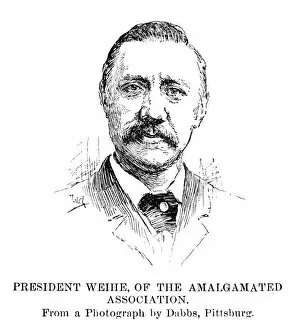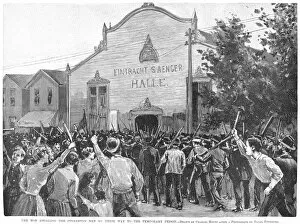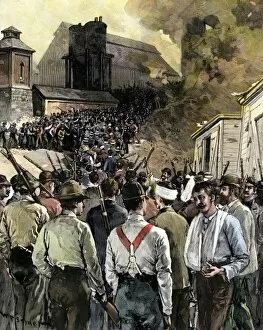Homestead Strike Collection
The Homestead Strike of 1892 was a pivotal moment in American labor history, marked by intense clashes and significant figures
All Professionally Made to Order for Quick Shipping
The Homestead Strike of 1892 was a pivotal moment in American labor history, marked by intense clashes and significant figures. One such figure was Henry Clay Frick, an influential American industrialist whose attempted assassination by Russian-American anarchist Alexander Berkman on July 23rd sent shockwaves throughout the nation. Amidst the chaos, Colonel Robert Dechert emerged as a prominent leader of the National Guard forces responding to the Homestead crisis. His unwavering commitment to maintaining order and protecting both sides from further harm played a crucial role in shaping the outcome of this historic event. As tensions escalated, striking workers took drastic measures to assert their demands for better working conditions. The arrest of a correspondent by these determined strikers highlighted their determination and willingness to fight for their rights. Meanwhile, amidst all the turmoil, even mundane tasks like delivering mail became fraught with danger. Postmasters risked their safety as they braved hostile environments while bringing letters and parcels to National Guard troops stationed in Homestead. Transporting camp supplies became another challenging task during this tumultuous time. Commissaries faced numerous obstacles as they navigated through tense territories en route to General George Snowden's basecamp. Their resilience ensured that essential provisions reached those who needed them most. The presence of military personnel also loomed large over Homestead during this strike. Members of the Sheridan Cavalry and Governor's Troop stood guard against potential threats while striving to maintain peace within an increasingly volatile environment. At Headquarters Advisory Board meetings, strikers gathered eagerly seeking news updates that could potentially sway the course of events in their favor. These gatherings served as rallying points where hope mingled with uncertainty among those fighting for fair treatment at work. General George Snowden emerged as one of the key leaders within Pennsylvania's National Guard during this period. His strategic decisions shaped military responses and influenced how authorities dealt with striking workers throughout Homestead. On nearby hills overlooking town lay Pennsylvania militia camps, a constant reminder of the escalating tensions.




















